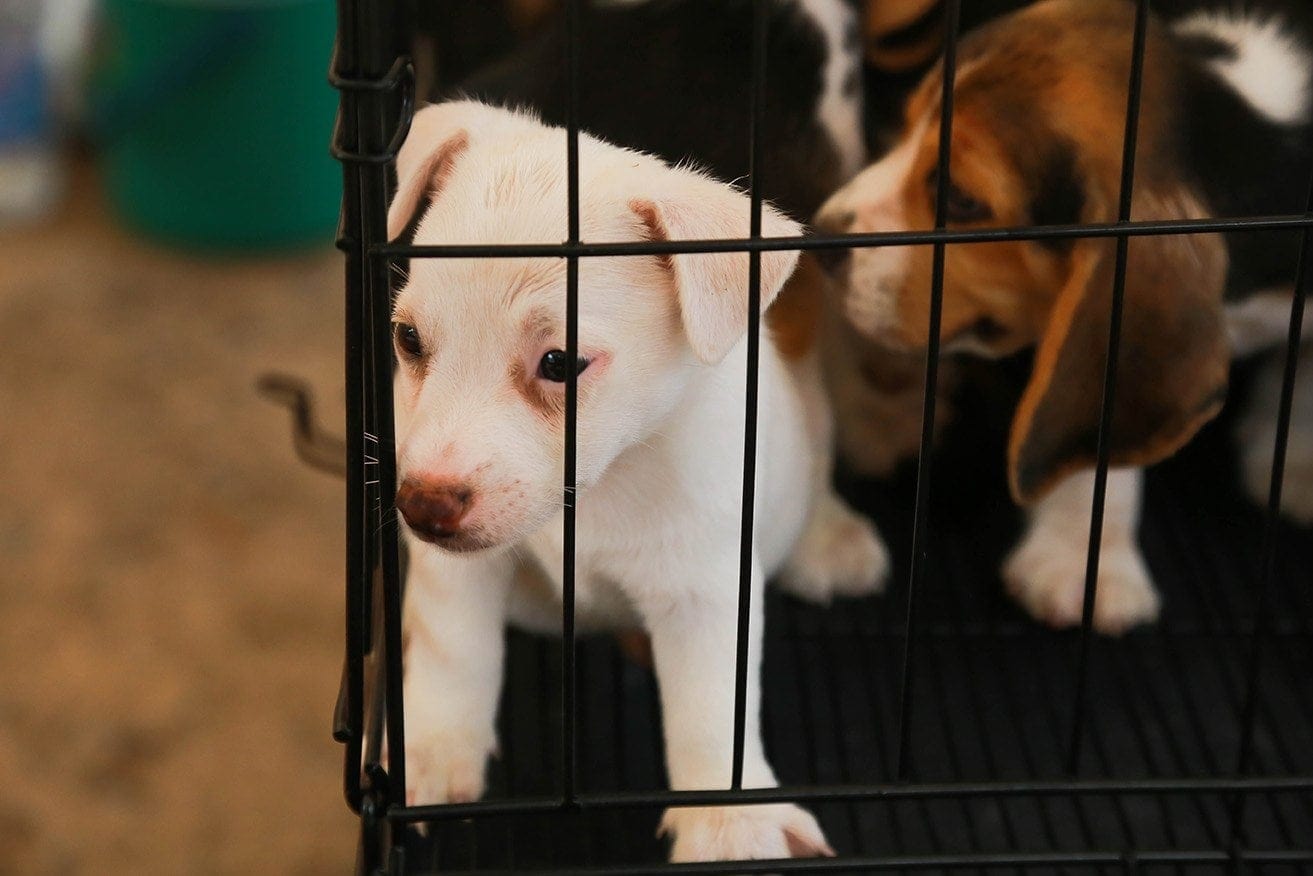Buying a pet online from a breeder or pet store can be an accessible (but expensive) way for people who are looking for animal companionship to find a furry friend. They might be unaware that there are much more affordable options for adopting a pet at municipal animal shelters. Adopting a pet from a shelter or buying one from a reputable breeder can be invasive and rely on the subjective judgment of the pet vendor or adoption organization, which frequently favors middle-class, wealthier, white households. Additionally, some people may have a specific breed in mind for their dog because they are allergic to pet dander. However, because the United States Department of Agriculture’s (USDA) licensing requirements for dog breeders are lax and ineffectively enforced, customers may be easily duped and encouraged to support breeders who are more concerned with their bottom line than the welfare of the animals they are enclosing.
The issue with puppy mills is that they give dog farmers a consistent source of income in a highly unregulated and potentially very lucrative industry. In the film “Dog by Dog,” Sarah Speed of The Humane Society of Pennsylvania stated that with a small initial investment of a few hundred dollars, “for a few breeding pairs, you could be selling puppies for a thousand dollars or more a piece,” yielding “tens of thousands of dollars within a couple of years.” ”.
Additionally, there are overlaps between puppy mill cruelty and the larger issues with animal agriculture. The “Dog by Dog” filmmakers discovered in 2015 that many puppy mills were USDA-licensed dog breeding facilities as well as agricultural producers receiving USDA subsidies for goods like dairy. Owners of puppy mills frequently put financial gain ahead of animal welfare, as is the case with other businesses in the animal agriculture sector.
1 Dogs who die in puppy mills are often dumped unceremoniously rather than given proper burial or cremation.

Given the conditions often present in puppy mills, it should come as no surprise that many animals never make it out alive. Whether they die from disease, neglect, or just exhaustion after years of overbreeding, most mills have to deal with a large number of dead dogs.
Authorities in Missouri discovered that a puppy mill was disposing of dozens of dead animals in the nearby woods in one instance. These animals were simply left in the open; they weren’t even buried.
Although that is obviously disrespectful to the dogs, it also raises the possibility that the disease that will likely infect their corpses will spread, making the practice a legitimate public safety concern.
500,000 dogs are currently kept solely for breeding purposes in puppy mills.
Since one male can produce numerous different female offspring, the majority of these dogs are female. These dogs are typically kept in deplorable conditions and are continuously bred. The majority of females do not live long because of the constant breeding and unfavorable conditions that quickly wear down their bodies.
Therefore, puppy mills have to continuously restock their females. Typically, these females come from a litter that the puppy mill produced. Some dogs are inbred with their own father or brother. Of course, the exact number of dogs is always changing.
Only about 24% of all puppy mills are USDA licensed.
While there are facilities that adhere to the laws that are in place, some places may have lax laws regarding commercial mills. Unfortunately, these mills seem to be in the minority.
Due to a lack of licensing, it is impossible to monitor what occurs at these facilities. Many of the current statistics are therefore inaccurate because they are either educated guesses or only apply to licensed facilities.
FAQ
What state has the most puppy mills?
There are puppy mills all over the world, but the Midwest has a disproportionately high number. Puppy mills are most prevalent in Missouri among all states in the union. Puppy mills are also widely distributed in Amish and Mennonite communities, particularly in Ohio, Indiana, and Pennsylvania.
How common are puppy mills?
Fewer than 3,000 of the estimated 10,000 puppy mills in the U.S. are subject to U.S. government regulation. S. Department of Agriculture.
What percentage of dogs come from puppy mills?
Commercial breeding operations known as puppy mills produce large numbers of dogs (and cats in cat mills) for pet store sales or for sale to consumers directly through classified ads or the Internet. Approximately 90% of puppies sold as pets come from puppy mills.
How do you tell if a pet store is a puppy mill?
- Puppies Are Unclean or Unhealthy. …
- Puppies Aren’t Vaccinated. …
- Puppy Mill Owners Won’t Meet You At Home. …
- Puppy’s Parents Aren’t Present. …
- Pet Store Puppies are Usually from Mills. …
- Multiple Breeds are Available. …
- Many Litters Can Be Found.